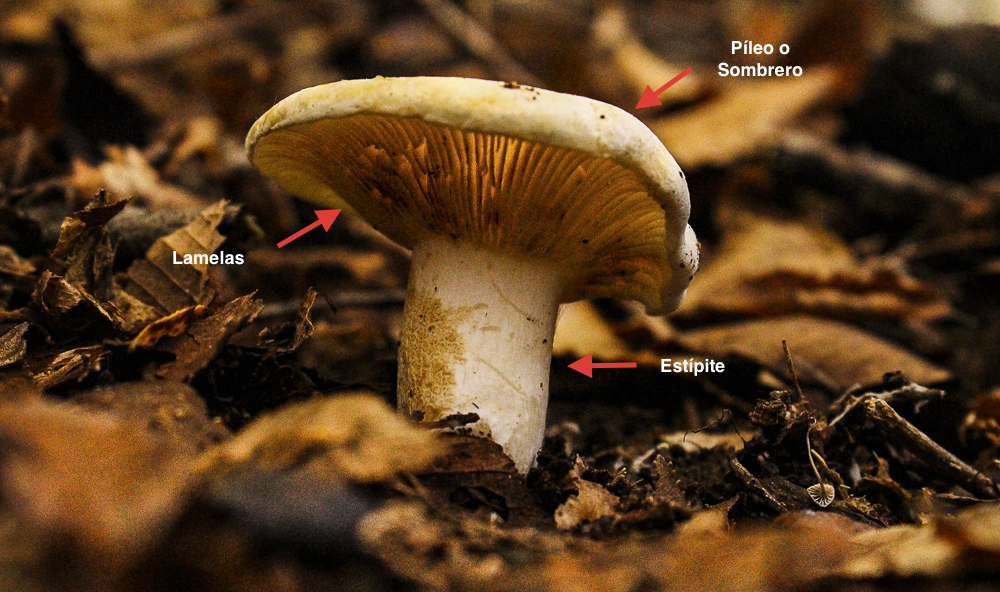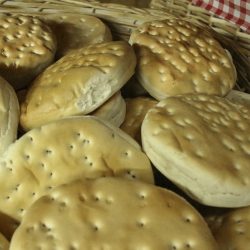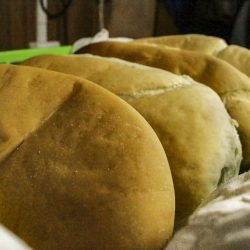
Hello! My name is Evelyn, and I’m writing the blog for this week! Throughout the weeks that we been here, we have gained a better understanding of the natural and social history of Neltume. However, since coming here I have been fascinated with all the new vocabulary we are learning especially that which is specific to Chile. From listening to members of Neltume’s Chamber of Commerce discussing their businesses for the purpose of making websites to asking our program director, José, about the names of certain foods, I am starting to compile a list of words.
Fauna/Nature
Starting from the first full day, the group has come to understand that I really enjoy stopping along the trails we hike around the Huilo Huilo preserve to take picture of copihue flowers. Copihue is the national flower of Chile, however, now it is very rare to see in the wild. It is only in temperate rainforests in the South of Chile where you can find this beautiful climbing vine with its bell-shaped flowers. Interestingly enough, the name for this flower comes from the Mapuche and Pehuenche (two of the indigenous groups of Chile) (Species, 2014).
Here in Neltume, we are actually very close to a Mapuche town, so the names of fauna, flora, cities, and more in this region are often derived from Mapuche words (so much so that we now purchased a Mapuche dictionary to help us out). The legend on how the flower was named Copihue in itself is very interesting involving a prince and princess from the rival indigenous groups, but to be able to see this important national symbol of Chile (often used to sell merchandise or for independence festivals) in action was a gift (Australis, 2017). At this time of the year, the Copihue aren’t usually blooming and you may find them fallen on the forest floor, but while doing some of the trails around the preserve we were lucky to see them in bloom.
We also had the opportunity to work with a group specializing in the taxonomy of the fungi kingdom and the study of fungi diversity and conservation, called Micófilos. This is a group of fungi experts from Santiago that came for two days to train us to collect fungi and properly take notes. During this time, we were not only able to learn how to collect fungi for proper DNA testing in Santiago but picked up some words to describe the structure of fungi in Spanish since we have to take notes in Spanish.

The group from Santiago were all very kind and brought high-levels of enthusiasm as we worked in the cold, shady areas of the forest. Personally, for most of the time, I was either working with Christian and Carola to improve my photography skills and learn tips on how to photograph fungi that inhabit dark areas better or shadowing Viviana and María José to better learn how to take notes. The highlight was finding the Entoloma necopinatum, a species which had very few sightings documenting them in the past 50 years. It was a wonderful experience overall, and it was very exciting to work with such a passionate group.

Food
Ever since the first day, we enjoyed lots of freshly baked bread called “hallullas”, which is a bread baked in Chile that is round and appears to be simple-tasting, but trust me this bread is delicious! It is also very interesting to learn the process of making this bread! While interviewing Eduardo, the baker from one of the local panaderías, called Pan de Montaña, he explained how he wakes up at 3:00 am every day to start making the bread available to sell by the early morning. The time and dedication he puts to have fresh bread available to sell every day was phenomenal and was an eye-opener on how I see the Hallullas provided to us every day by the Huilo Huilo foundation.

The other types of bread we were fortunate enough to try are “pan amasado”, “pan con chicharrón”, “pan de churrasco, coliza (very similar to hallullas, however, it is square-shaped and flatter), marraqueta, and sopaipilla.
Quick Definitions:
- Pan amasado is a type of kneaded bread that is usually more oval shaped with more dough compared to hallullas. What is interesting about this type of bread is that it is easier to make at home.
- Pan con chicharrón is a very popular item in Supermercado and Panadería Maylen. This bread has small pieces of pork in it.
- Pan de churrasco is a type of bread usually used for hamburgers or sandwiches containing meat.
- Marraqueta is a type of bread that is very popular in Chile and is actually a type of French roll. The marraqueta is very iconic and recognizable to every Chilean.
- Sopaipilla is the amazing dessert bread that we were happily introduced to! It is fried bread that is usually made in disk shapes. Pro tip: Add some dulce de leche on top of the sopaipilla. Señora Judy and Jacqueline are very kind to bake us some of this treat every once in a while!



Since our arrival, we have been eating an array of bread types and have been using dulce de leche, mermelada, and butter to complement the bread. The fact that we would consume bread up to three times a day and all the panaderías on every block also made me realize that bread is quite the staple to the Chilean diet. Chile is a country where bread consumption is actually more than 200 pounds per person, making Chileans among the top bread consumers in the world (Smith, 2016). This statistic isn’t surprising after seeing how much love that not only bread gets, but also sandwiches. In Chile, there are many types of sandwiches that we had the chance to try. Different types of sandwiches include barros luco, barros jarpa, chacarero, chemilico, various types of churrasco, completos, lomito, and mechada.
Quick Definitions*
• Barros Luco: beef and melted cheese
• Barros Jarpa: ham and melted cheese
• Chacarero: beef, tomato, green beans, and chopped green chili
• Chemilico: beef and melted cheese with a fried egg
• Churrasco: a type of beef usually paired up with different combinations of ingredients
• Completos: Chilean version of hotdogs with a plethora of ingredients including sauerkraut, salsa Americana, tomatoes, and mayonnaise.
• Lomito: pork slices, sauerkraut, and tomato slices
• Mechada: slow cooked pulled beef sandwich combined with various ingredients
*All of these translations are the courtesy of different menus I seen from restaurants as of far.
Even though we are learning about all the bread that we are (happily) consuming (thank you very much), we also had the opportunity to try other Chilean foods from spices to sweets. Merkén is the best spice that none of us from DukeEngage Chile (except José) heard of before this trip. Since trying it on the fateful first day of this trip many of us add Merkén to complement almost every meal from scrambled eggs, chicken, soup, chili, and more. The word Merkén is another example of the incorporation of the Mapuche language meaning smoked chili pepper from the word mezkeñ.
Some of the sweets that we were able to indulge in thanks to our fabulous cooks, Señora Judy and Jacqueline, and the kindness of the members in the community of Neltume include Cachito, Calzones Rotos, Cuchuflí, Kuchen, Leche Nevada, Selva Negra, and more.


Quick definitions:
• Calzones Rotos: Is a traditional Chilean fried sugar pastry (almost like a fried cookie)
• Cuchuflí: Is a popular Chilean sweet shaped in tubes and filled with a sweet filling similar to wafer rolls.
• Leche Nevada: Is a Chilean dessert made containing milk, eggs, vanilla, sugar, corn starch, and Canela en Polvo
• Selva Negra: Equivalent to the Black Forest cake in English
Slang/Vernacular
Besides learning about Chilean cuisine and fauna, I am starting to pick up some of the common slang words and vernacular used in daily conversations. Some Chilean slang words and vernacular I picked up so far are listed below:
1. Bacán = Awesome or Cool
2. Cachai = “Do you get me ?” or “Do you understand?”
3. Sipo = Another way of saying yes
4. Nopo = Another way of saying no
5. Po, in general, is used after every single sentence (can refer to a shorter version of pues)
6. Wawa/Guagua = a baby
7. Gallo/a = boy or girl of all ages; similar to the English expression “guy”
8. Luca = specifically refers to 1,000 pesos
9. The “vos” form in conjugation. Unlike many other Spanish-speaking countries, Chileans use the “vos” conjugation. So instead of saying “¿Como estás?”, you would use “Como estái?”
10. Weon/Weona = can be used as an endearment between friends.
Citations
Australis. “The Chilean Bellflower: 10 Facts About This National Flower.” Patagonia and Other Adventure Travel Destinations, Australis, 27 Apr. 2017, blogpatagonia.australis.com/chilean-bellflower-10-facts/.
Smith, Eileen. “In Chile, ‘Marraqueta’ Is The Daily Bread.” NPR, NPR, 7 July 2016, www.npr.org/sections/thesalt/2016/07/07/484987260/in-chile-marraqueta-is-the-bread-of-life.
“Species Profile: Copihue.” Conservacion Patagonica News, 6 Mar. 2014, www.conservacionpatagonica.org/blog/2013/10/07/species-profile-copihue/.
